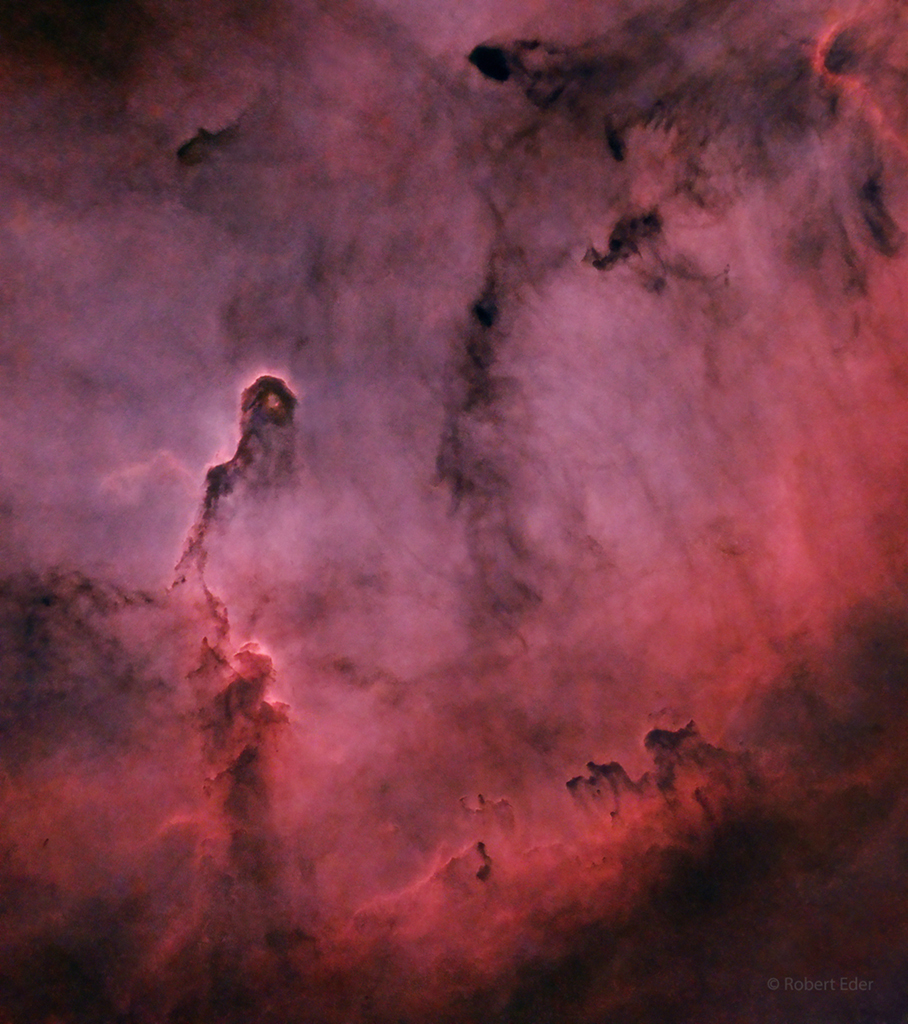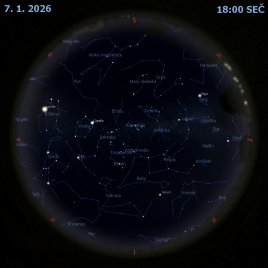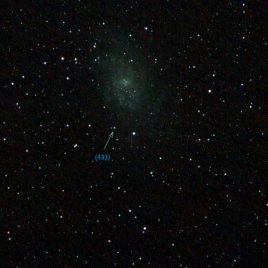Sloní chobot a Karavana

Uznání a copyright: Robert Eder
Mlhovina Sloní chobot se vine emisní mlhovinou a komplexem mladé hvězdokupy IC 1396 ve vysoko stoupajícím souhvězdí Kefea (Cepheus) jako ilustrace v galaktickém Příběhu jen tak. Kosmický sloní chobot na obrázku vlevo je dlouhý přes 20 světelných let a je znám též jako vdB 142. Na tomto podrobném teleskopickém pohledu jsou zvýrazněny jasné hřbety, které obkreslují kapsy mezihvězdného prachu a plynu díky digitálnímu zpracování, které odstranilo všechny viditelné hvězdy. Tmavá oblaka ve tvaru dlouhých úponků však obsahují suroviny pro vznik hvězd a skrývají v sobě protohvězdy. Téměř 3000 světelných roků vzdálený, poměrně slabý komplex IC 1396, pokrývá na obloze oblast o rozloze větší než 5 stupňů. Tato bez hvězd vykreslená oblast se však rozprostírá na zorném poli širokém pouze jeden stupeň, což je úhlová velikost přibližně 2 úplňků. Temným útvarům dole a vpravo, které jakoby pochodují směrem k vinoucímu se Slonímu chobotu, někteří pozorovatelé pochopitelně říkají Karavana.
Seznam odkazů v popisu
- APOD: 2005-09-08 IC 1396 v Kefeu
- HawAstSoc.org: Cepheus
- Boop.org: Just So Stories by Rudyard Kipling. Originally published 1902: THE ELEPHANT'S CHILD
- UNH.edu: What is the Interstellar Medium?
- AstroBin.com: Robert Eder: Elephants Trunk
- APOD: 2007-02-18 M16: Sloupy stvoření
- CalTech.edu: Dark Globule in IC 1396
- NASA: The Cosmic Distance Scale
- AstroBin.com: Robert Eder: The Caravan on the march to the Elephants Trunk
- Boop.org: Just So Stories by Rudyard Kiplin. Originally published 1902
NASA Official: Phillip Newman Specific rights apply. NASA Web Privacy Policy and Important Notices
A service of: ASD at NASA / GSFC & Michigan Tech. U.
Odkaz na originální APOD


